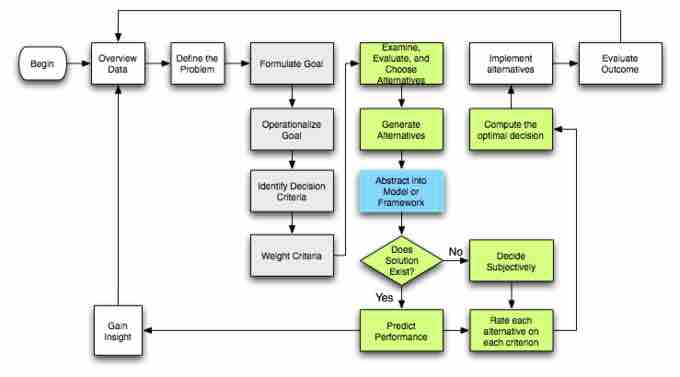The Process of Rational Decision Making
Rational decision making is a multi-step process for making choices between alternatives. The process of rational decision making favors logic, objectivity, and analysis over subjectivity and insight. The word "rational" in this context does not mean sane or clear-headed as it does in the colloquial sense.
The approach follows a sequential and formal path of activities. This path includes:
- Formulating a goal(s)
- Identifying the criteria for making the decision
- Identifying alternatives
- Performing analysis
- Making a final decision.

Rational-decision-making model
This flowchart illustrates the process of rational decision making.
Assumptions of the Rational Decision-Making Model
The rational model of decision making assumes that people will make choices that maximize benefits and minimize any costs. The idea of rational choice is easy to see in economic theory. For example, most people want to get the most useful products at the lowest price; because of this, they will judge the benefits of a certain object (for example, how useful is it or how attractive is it) compared to those of similar objects. They will then compare prices (or costs). In general, people will choose the object that provides the greatest reward at the lowest cost.
The rational model also assumes:
- An individual has full and perfect information on which to base a choice.
- Measurable criteria exist for which data can be collected and analyzed.
- An individual has the cognitive ability, time, and resources to evaluate each alternative against the others.
The rational-decision-making model does not consider factors that cannot be quantified, such as ethical concerns or the value of altruism. It leaves out consideration of personal feelings, loyalties, or sense of obligation. Its objectivity creates a bias toward the preference for facts, data and analysis over intuition or desires.